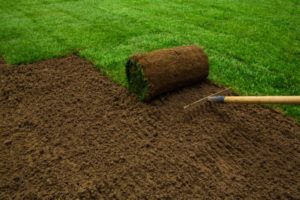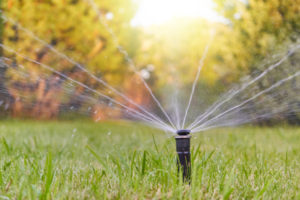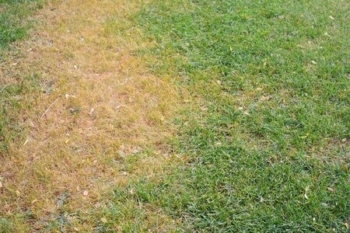A beautifully maintained lawn can significantly enhance the overall appeal of your home and provide a space for outdoor activities and relaxation. However, even the most well-cared-for lawns may develop bare spots from time to time.
Whether caused by foot traffic, pet damage, lawn diseases, or other factors, these unsightly patches can disrupt the uniformity and health of your turf. The good news is that with the right approach and a little bit of effort, you can restore the lushness and vitality of your lawn. In this article, we’ll explore effective ways to repair bare spots and achieve a vibrant and green lawn you can be proud of.
Identify the Cause

Before starting the repair process, it’s essential to determine the cause of the bare spots in your lawn. Identifying the underlying problem will help prevent further damage and ensure long-term success.
Common causes of bare spots include compacted soil, inadequate watering, poor drainage, excessive thatch buildup, pest infestations, and disease. Chinch bugs, armyworms, grubs, and lawn mites are common pests found in lawns.
Learn how to get rid of lawn mites. By understanding the cause, you can address the issue directly and implement the appropriate solution.
Prepare the Area
To begin the repair process, clear the bare spots of any debris, weeds, or dead grass. Rake the area gently to loosen the soil and remove any excess thatch.
If the soil is compacted, use a garden fork or an aerator to improve its structure and promote better air and water circulation. This step is crucial as it allows the new grass seeds or sod to establish firm root contact with the soil.
Choose the Right Repair Method

Depending on the size and severity of the bare spots, you have a few options for repairing your lawn. The most common method is sodding.
Sodding: Sodding is a quicker solution for larger or more damaged areas. Purchase fresh, healthy sod from a reputable supplier. Prepare the bare spots by removing debris and loosening the soil.
Lay the sod tightly together, ensuring the edges are properly aligned with the existing turf. Use a roller to press the sod firmly into the soil. Water the newly sodded area immediately and continue to water frequently for the first few weeks until the sod roots firmly into the soil.
Contact us to get your fresh sod installed today.

Provide Proper Care
Once you have repaired the bare spots, it’s crucial to provide proper care to help the new grass establish and flourish. Follow these care tips to ensure the best results:
Watering: Water the repaired areas deeply and regularly to keep the soil consistently moist until the new grass is well-rooted. Avoid overwatering, as it can lead to shallow rooting and other issues. Once the new grass reaches a mowing height, gradually reduce the frequency of watering while increasing the amount of water applied to encourage deeper root growth.
Fertilization: Apply a balanced slow-release fertilizer to the entire lawn, including the repaired spots. This will provide essential nutrients for healthy growth and help the new grass blend seamlessly with the existing turf. Follow the fertilizer manufacturer’s instructions for proper application rates and timing.
Mowing: Once the new grass reaches a height of about 2-3 inches, you can start mowing. Set the mower blade at the appropriate height for your grass variety and avoid cutting more than one-third of the grass blade length at a time. Regular mowing promotes dense and healthy turf while preventing weed competition.
Weed Control: Keep an eye out for weeds and apply a selective herbicide if necessary. Ensure that the herbicide is safe for use on new grass and follow label instructions carefully to avoid any potential damage. Read our other article titled, “Fall Weed Control.”
Preventive Measures
To minimize the occurrence of bare spots in the future, it’s essential to implement preventive measures. Encourage proper lawn care practices such as regular mowing, appropriate watering, and correct fertilization.
Address issues such as excessive foot traffic by creating designated pathways or installing stepping stones. Consider sodding your lawn annually to fill in any thin areas and maintain its overall health and density.
Wrapping Up

By following these steps and consistently caring for your lawn, you can successfully repair bare spots and achieve a beautiful and vibrant turf.
Remember, patience and persistence are key. With time, the repaired areas will blend seamlessly with the rest of your lawn, providing you with a lush and healthy landscape you can enjoy for years to come.
